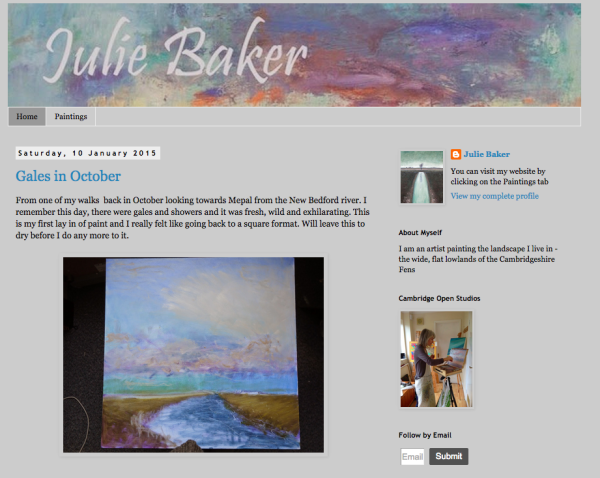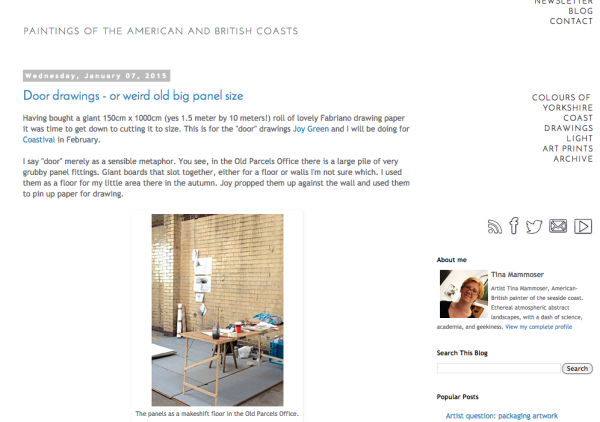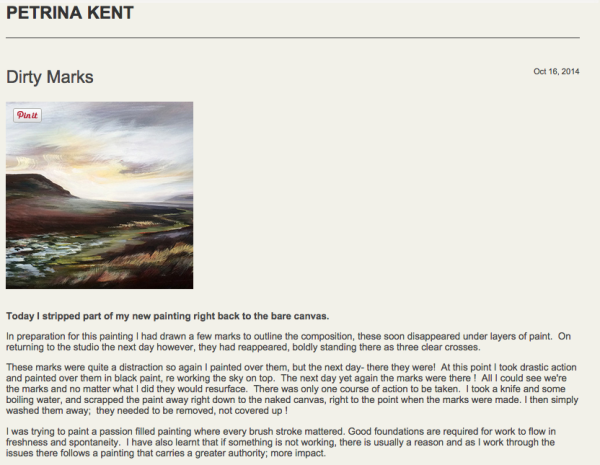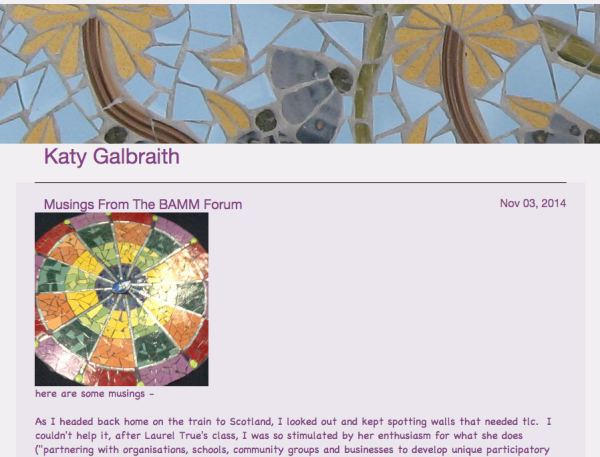Ok, so it might be a cold, demotivating January outside, but hey, it’s still just the beginning of 2015! What better time than to update your blog – to take it to another level, beyond all expectations of what a blog can be. Think of all those potential customers out there, most definitely trawling the web right now looking for interesting content… Well, it’s up to you to bring it to them.
Artist blogs are often neglected, but wrongly so! They can be a fantastic way to share the ‘human’ side of your practice, to publicise your studio practice and activities, and to reach out to your audience. Way back in the summer of ’13 (a hazy distant memory), we gave you 5 ways to instantly improve your blog. They were good, granted, but we thought you deserved a few more – so here are 8…
1. Make it personal
We’ve talked in the past about how showing the real person behind the art is the key to connecting with your audience. Your blog is the primary place to do this, so put your all into every post! An important tip – don’t just post images of a recent artwork with no explanation. Share the story behind it, the images, poetry, or location that inspired it, and what the process entailed. A fantastic example of an artist blog doing just that belongs to painter Julie Baker, who regularly shares her creative process with her readers (even when it involves flying through the air!):
2. Start a regular tutorial series
If you’ve got a skill, (which let’s face it, most artists do!) then why not share it via a blog tutorial. Of course, we’re not saying you should give away your magic formula, or meticulously-honed processes, but a simple yet intriguing idea can go a long way to inspiring your readers, and to keep ’em coming back. It could be anything, like ‘how to draw noses’, or ‘how to make an origami giraffe’. Small, bite-sized tutorials are the most effective, and can be presented as simple instructions (images are always important), or as a video tutorial. The obvious benefit of video is that you can speak over the top, which might help explain more complicated details. If you can commit to doing this once a month, or even once a week if you have the time, then it can become a regular form of content that you can easily push out across your networks. See Mollie Makes, Empty Easel, or Carla Sonheim for inspiration.
3. Reference the work of others – and make sure they know about it
Been to a great local exhibition recently? Seen someone’s work you really admire at an open studios? If you can, chat to the artists showing work and let them know who you are – give them a business card and invite them to follow you online. A great idea is to then write a blog post about the exhibition or the work you’ve seen, recommending it to others and giving it a mini personal review. This benefits your blog in 2 ways. Firstly, it will help your audience understand your influences, and give more insight into your practice. Secondly, by letting people know that you’ve featured or mentioned them (tweet them or email them), they’ll likely be flattered, and may well be inclined to share your post with their followers, thereby increasing your reach and audience!
4. Open up – share your failures as well as your successes
As we’ve mentioned before, a blog is a great place to informally boast (in a good way). Things you might not put on your website, such as documentation of your latest show or private view, a sketchbook work in progress, a recent work that sold 10 editions etc etc. But it’s also beneficial to once in a while show your more vulnerable side, and share work things that may not have gone to plan. Being honest and open gives you integrity, and allows your blog followers to relate to you on a personal level.
5. Link up your Instagram
Photo feeds are a brilliant way to share your personal and creative take on the world, in a light-hearted and informal manner. By far the most popular of these is Instagram, a social media network in it’s own right. Many blogging platforms have plug-ins that enable you to sync your Instagram account to your blog, meaning you can update whilst you snap. Does sharing your life with your blog followers sound like the worst thing in the world? Why not set up a separate account just for your art? That way you can still introduce a personable aspect of your artist brand, whilst curating the images you upload in order to cater to your audience.
6. Challenge yourself
Struggling to find content for your blog? An easy remedy for this is to set yourself a blogging challenge, and make it public. There are many examples of these floating around, such as photographers setting themselves the ‘photo a day’ challenge for example. Perhaps you could have a ‘landscape month’ where say, every Wednesday, you post an image of a landscape painting completed within that week. Or how about a weekly studio creation, where every Monday you create a piece of art using only what you have in your studio at that moment. As well as becoming content for your blog, it can also be a valuable way to motivate yourself into creating, so think of something that will benefit your practice the most.
7. Run a monthly competition
As well as challenging yourself, why not challenge your readers! There are many types of blog contests out there, and they generally work by encouraging engagement in return for a small prize. The prize itself doesn’t have to be huge, and it can also be a good way of de-cluttering previous work. Things like limited edition prints, small experimental works, that kind of thing. Even better, if you’ve got a strong following, you could potentially team up with an art suppliers to collaborate on a giveaway of materials, as an example. One way to initiate a competition is by asking people to comment on a particular work or blog post with their opinions and feedback, and to select one of your commenters at random at the end of the month. This encourages direct engagement with your content, whilst also providing you with valuable opinions!
8. Think about what your potential customers want to read about
The main thing to think about when creating content for your blog is that yes, it is primarily based around you and your practice, but that the most important factor in all of this is your audience. How much they engage with your posts will have a great impact on how many people ultimately get to see your work, so it’s imperative that you consider your content with them in mind. Think about who they might be and what interests they might have – are they amateur artists themselves who want to learn more skills? Or are they going to be more interested in the person behind the art? By successfully tailoring your blogging schedule to your audience, whilst also benefiting your practice, you’ll be maximising the potential of your artist blog for all involved… hurrah!
And finally, here are some wonderful blogs by ArtWeb artists to inspire you…











